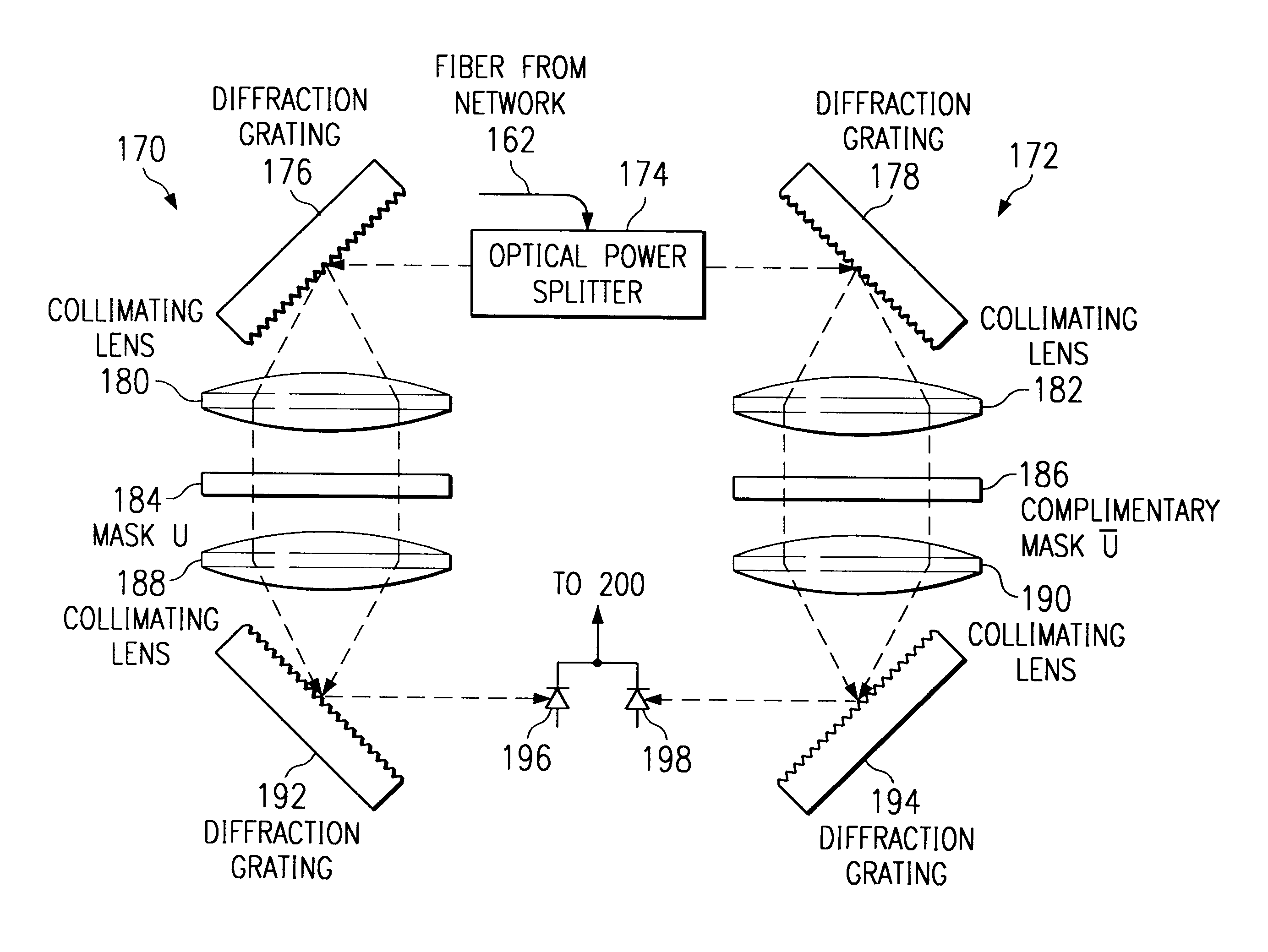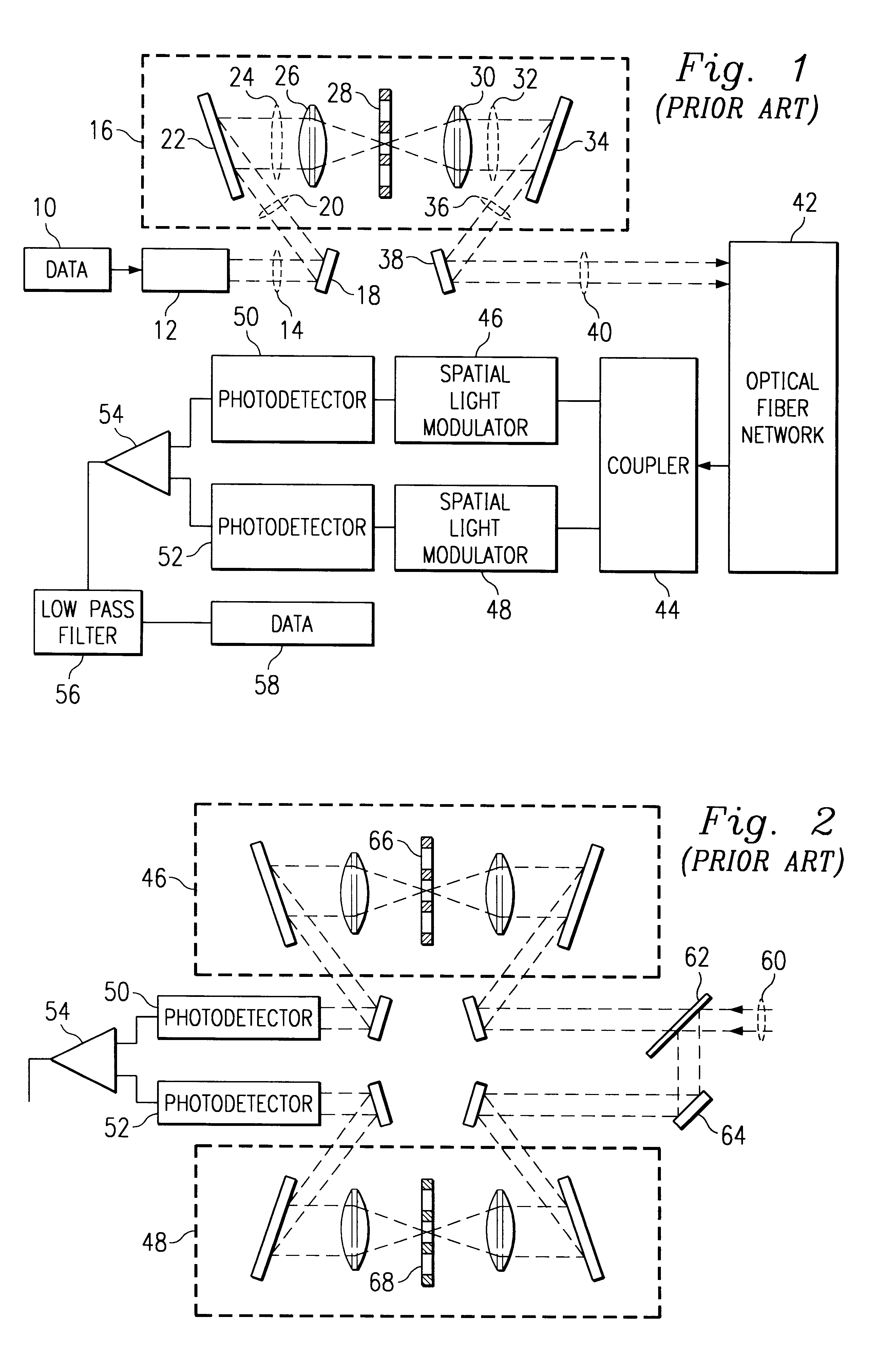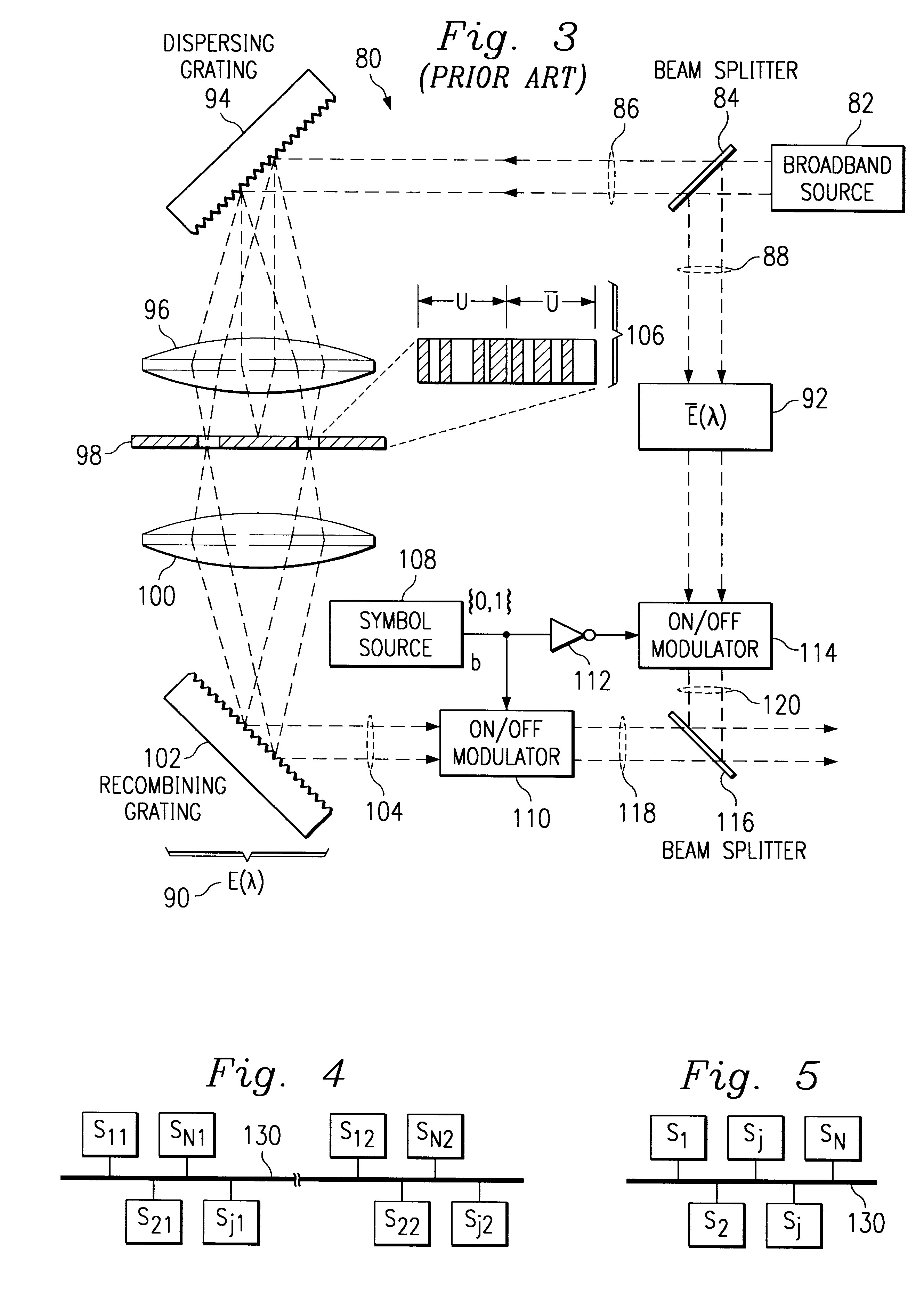Optical CDMA system using sub-band coding
a communication system and sub-band technology, applied in the field of optical communication systems, can solve the problems of inability to upgrade the network, the communication system only uses a small fraction of the available bandwidth, and the installation of optical fibers over long distances is expensiv
- Summary
- Abstract
- Description
- Claims
- Application Information
AI Technical Summary
Problems solved by technology
Method used
Image
Examples
first embodiment
FIG. 7 is a block diagram of a decoder according to the present invention.
second embodiment
FIG. 8 is a block diagram of a decoder according to the present invention.
FIG. 9 is a sketch of a liquid crystal mask for use in a third embodiment of an encoder according to the present invention.
FIGS. 10A, B and C are continuous representations of discrete transparency functions for the mask of FIG. 9.
FIG. 11 is a graphical representation of a Fourier transform of light received from the fiber.
FIGS. 12A and B schematically illustrate an encoder and a decoder according to a third embodiment of the invention.
FIGS. 13A, B and C present a graphical representation of a mask and mask functions according to a next embodiment of the invention.
FIG. 14 schematically illustrates an apparatus for generating an array of N broad-spectrum optical sources having sufficient intensity to generate light beams for N channels of communication over a fiber using methods in accordance with the present invention.
FIG. 15 presents a different representation of the mask of FIG. 9.
FIGS. 16A and 16B illustrat...
PUM
 Login to View More
Login to View More Abstract
Description
Claims
Application Information
 Login to View More
Login to View More - R&D
- Intellectual Property
- Life Sciences
- Materials
- Tech Scout
- Unparalleled Data Quality
- Higher Quality Content
- 60% Fewer Hallucinations
Browse by: Latest US Patents, China's latest patents, Technical Efficacy Thesaurus, Application Domain, Technology Topic, Popular Technical Reports.
© 2025 PatSnap. All rights reserved.Legal|Privacy policy|Modern Slavery Act Transparency Statement|Sitemap|About US| Contact US: help@patsnap.com



